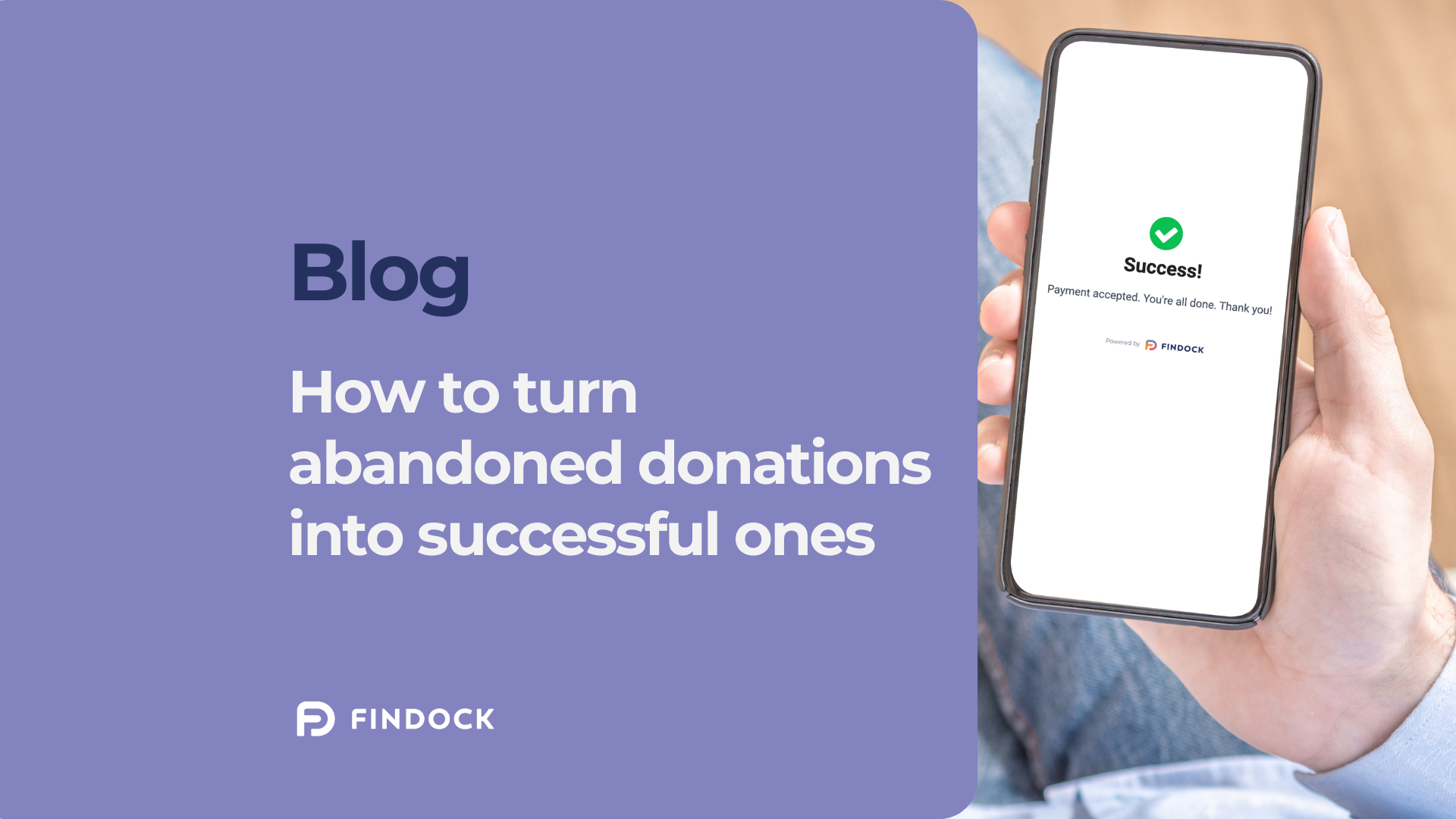When someone decides to make a donation, that’s great news for your charity. But a lot can happen from the moment a donor fills out their name and transfers the money. The fact is, abandoned payments are a quite common issue. And that’s a shame, especially when people have come so far! Fortunately, you can take action to encourage donors to pick up where they’ve left. But how to spot abandoned payments? And how to follow up effectively?
Follow up to help donors follow through
Sometimes, people are interrupted while filling out the online donation form. Other times, there’s a technical error that prevents them from completing all steps. Either way, abandoned payments are the result.
If their details aren’t saved, you’ve basically lost the donor — even if they’ve already provided their payment information or have tried more than once. Especially in such cases, it’s crucial to follow up. It’s usually not difficult to collect the donation after all, since the donor had already decided to donate. But you should be the one initiating it, as the donor has given quite some effort at this point.
If you’re dealing with a first-time donor and have lost their information, it is of course a missed opportunity to connect with them and start building a relationship. But if it’s a recurring donor, it might be even more important to follow up, as you want to preserve the existing relationship.
How to go about it? By handling payments in your CRM, where all your donor data is stored and can be retrieved.
Personalize your response to the individual donor
Nonprofits that don’t handle payments in their CRM don’t notice successful or failed transactions. So there’s no way they can follow up on abandoned payments.
But if you handle payments in Salesforce, you’ll be on top of things and can double down on relationship management whenever you should. That means doing more than displaying a generic message along the lines of, “Apologies, your payment didn’t come through due to an error.” Your donors deserve better!
If, for example, you spot an abandoned extra payment from someone who donates every month, it’s incredibly important to thank them for the effort and refer to their recurring donations. Whether they complete the transaction afterward or not, they deserve to be acknowledged.
If an abandoned payment is traced back to a major donor, your account manager might want to give them a call. A little effort goes a long way. The donor will feel special, and they’ll probably transfer the money if the account manager tells them what to do.
When approaching them, you need to know what went wrong. Suppose you’ve recently switched to a new payment method, such as a QR code, and a donor has tried it twice but failed. You need this information to effectively communicate with them about a solution.
From theory to practice: the value of automation
As great as this sounds, you probably wonder how to put theory into practice. Tracking a donor’s actions and payment history seems quite time-consuming. You can only do this manually if you have a tiny donor base or a giant staff and lots of hours.
Most nonprofits don’t tick these boxes. If they don’t, automation offers a solution: it helps you personalize your response while not taking up all your time.
One effective solution is Salesforce’s AI-driven interaction, which boils down to this: all relevant donor data is in your CRM, so you can use AI within Salesforce to further personalize your response. You can, for example, retrieve the right campaign information and find the appropriate tone to quickly write a follow-up email. Since this is an automated process, you don’t have to complete a list of manual tasks to handle an abandoned payment. The donor, however, will receive a highly personalized response.
Offer several options fast (but not too fast!)
When following up with a donor, act fast — but not too fast. Here’s what we mean by that. You don’t want to wait more than one hour, since donations are made in a certain emotional state of mind. Make sure they haven’t lost it. However, don’t rush into calling or emailing them. Before you contact a donor about an abandoned payment, check if the donation has come through after all. Perhaps the donor has tried again and it worked the second time around.
If not, it’s crucial to offer a concrete solution. There’s no use in confirming their payment failed. They already know that! So, provide a call to action. In fact, offer more than one option: your donor should be able to complete the payment in their preferred manner.
How to create these options? Set up a pay link page, including a simple URL people can use to make the payment. Include your branding, style, and message to the donor. Also, make sure the form is filled out — the donor’s details are stored in Salesforce, so use them. The only thing the donor should have to do is indicate how they want to pay!
Want to manage the donor lifecycle effectively?
Traditionally, online donation systems aren’t connected to a charity’s CRM. The process we’ve described in this blog post is different: it assumes the entire flow is incorporated into Salesforce, so you can see a donor’s contact information and payment history fast. This helps you follow up quickly and turn abandoned payments into successful ones.
The technical solution to this issue is FinDock’s payment API. Curious to learn how it works? Watch our on-demand webinar, “Managing the donor lifecycle effectively.”

